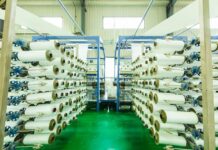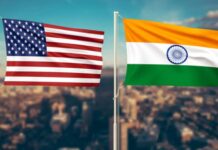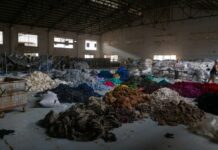The United States has doubled down on its trade strategy, imposing a staggering 50% tariff on Indian imports, with textiles and apparel at the epicenter of this economic aftershock. The first segment of 25% tariffs came into effect on August 7, followed by another 25% on August 27, making Indian textile products among the most heavily taxed foreign goods entering the US. This escalation is a direct reprisal for India’s continued purchase of Russian oil, and comes at a time when global trade is already under stress.
The US is India’s biggest export destination, accounting for 28% of all textile and apparel exports—worth over $10.3billion annually—and providing crucial support to millions of jobs in India’s labor-intensive textile sector. With the new tariffs, India’s products will be priced 30–35% higher than similar goods from Bangladesh and Vietnam, who face much lower duties of 20%. This sharp price differential is already resulting in cancelled shipments, renegotiated contracts, and some exporters halting US-targeted production altogether. “Why would anyone pay such high rates? Not only have existing shipments stopped, but we could see a big drop in export orders, potentially leading to factory closures and unemployment,” lamented Rahul Mehta, chief mentor of the Clothing Manufacturers Association of India, which represents thousands of exporters.
The impact is not limited to scale alone. The tariffs hit hardest on the subcategories of knitted clothing (63.9% total duty), woven garments (60.3%), and home textiles (59%). Major US retailers—including Walmart, Gap, and Target—have asked Indian suppliers to pause shipments, anticipating the extra costs cannot be passed onto US consumers without severely impacting demand. Exporters like Pearl Global’s MD Pallab Banerjee are under intense pressure to move production elsewhere, which for most Indian firms isn’t feasible.
Industry leaders warn of far-reaching consequences. Rakesh Mehra, chairman of the Confederation of Indian Textile Industry, called it “a huge setback”. Sanjay Jain, past president of CITI, was even more blunt: “New orders will not come. Old orders will have to be shipped at a loss. We will see a lot of unemployment in labor-intensive sectors like textiles and leather”. Sudhir Sekhri, chairman of the Apparel Export Promotion Council, estimates that buyers are now asking for discounts of up to 30% on ready-to-ship goods, with over $1billion of merchandise unlikely to clear due to the impending US deadline. He added, “If the 50% tariff remains, some exporters might as well have to wish their US business goodbye altogether.”
The fallout could be severe: analysts project a 40–50% drop in US-bound textile exports, annual losses of $4–5billion, and ripple effects that could slow India’s GDP by up to 0.6 percentage points. India’s competitive edge in textile exports, once secured by relatively low US duties, is now at risk, and smaller manufacturers face existential threats.
While some sector insiders see an opportunity to diversify exports toward Europe and other emerging markets, most are hoping the government can negotiate a swift bilateral agreement with Washington. Until then, the Indian textile industry faces a period of deep uncertainty, forced to adapt, innovate, and weather a trade storm more severe than any seen in decades.



































